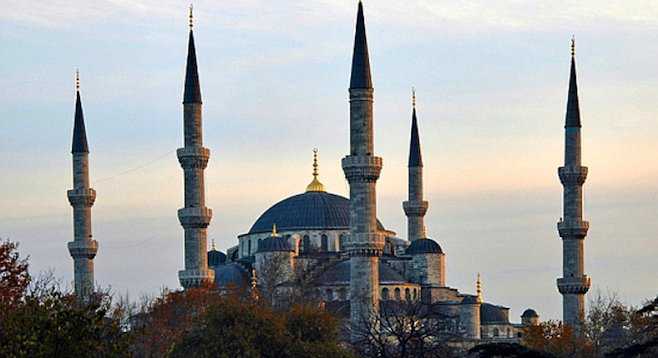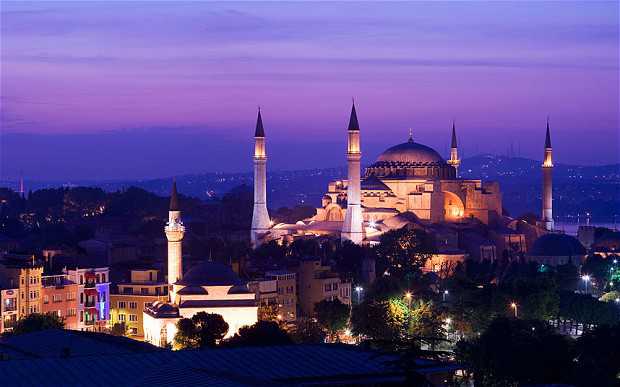By Joanne Blain, Vancouver Sun September 14, 2012

The Blue Mosque in Istanbul, the only mosque in Istanbul with six minarets.
Photograph by: Joanne Blain
With one foot in Asia and the other in Europe, Istanbul offers visitors a kaleidoscope of cultural experiences.
You can haggle for pricey Turkish carpets or cheap souvenir T-shirts in the Grand Bazaar, or sip a Starbucks latte while loudspeakers call the faithful to prayer at nearby mosques. One thing you can’t do is run out of places to see, things to buy and delicacies to taste — in this sprawling and eclectic city of 17 million, there’s no risk of boredom.
For the first-time visitor, the ideal place to stay in Istanbul is in Sultanahmet, more commonly known as the old city centre. There, you’ll be within walking distance or a short cab ride of most of the city’s key tourist attractions, and you can easily spend a whole week treading its cobblestone streets.
At the top of your list should be the Haghia Sofia (also called the Aya Sofya or the Museum of St. Sophia), right in the centre of the old town. Built in 360 A.D. as a cathedral, it has had a long and eventful history — when the Romans were conquered by the Ottoman Empire in 1453, it became a mosque and finally, in 1935, a museum.
Its sheer size is impressive, but its true beauty lies in its wonderfully preserved mosaics with Christian imagery juxtaposed with the ornate Arabic calligraphy on its central dome and on the medallions lining its walls. It’s a stunning visual testament to Istanbul’s long and complex history.
Just a few blocks away is the Sultan Ahmed Mosque, more commonly called the Blue Mosque. Even in the crowded city centre, it’s impossible to miss — it’s the only mosque in Istanbul with six minarets, which denote its significance (most mosques have a maximum of four).
Unlike the Haghia Sofia, the Blue Mosque is still a place of worship, so you’ll be asked to remove your shoes at the door and women should cover their hair with a hat or scarf. One entrance to the mosque is reserved for those who come to pray.
Inside, it’s not hard to see where the mosque got its ubiquitous nickname. Its ceiling of cascading domes is lined with more than 20,000 tiles in various shades of blue and gold. The mosque took 17 years to build in the early 1600s and it has lost none of its grandeur since then.
You could spend days going from mosque to mosque — the much smaller Rustem Pasa mosque, for example, is noteworthy for its ornate floral and geometric tiles — but Istanbul has much more to see.
The Topkapi Palace is a legacy of the Ottoman Turks, who built it as a showpiece and a home for sultans and their entourages when they took over the city that was then called Constantinople. Many of their treasures and spoils of war dating back to the 1400s are still on display there, including an arsenal of jewel-encrusted swords and the mind-blowing Spoonmaker’s Diamond, an 86-carat gem that earned its name from the fact that it was bought by a street merchant for three spoons after it was found in a rubbish dump. Small wonder it’s named for the buyer rather than the seller.
You’re unlikely to get any deals that spectacular at the Grand Bazaar, but it’s still worth a visit, whether or not you’re an avid shopper.
With more than 4,000 stores in a sprawling warren of arch-covered passageways dating back to the mid-1400s, it’s definitely a tourist draw, but you may also encounter groups of burka-clad women eyeing handmade tablecloths and groups of flag-waving local soccer fans just looking to make some noise.
via No risk of boredom in exotic, wonderful Istanbul.
more :




